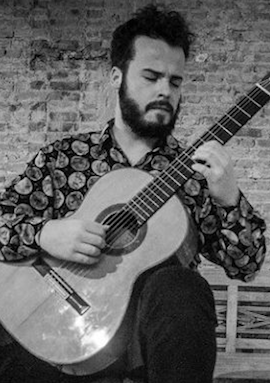Audiation-based Learning: a Preparatory Study to Developing a Music Learning Theory-based Guitar Method
In our Deeltijds Kunstonderwijs (DKO), instrumental tuition is still mainly notation-based. However, prominent music pedagogues such as Kodály, Orff or Suzuki advocate a ‘Sound before Sight and Theory after Practice’ approach.
Edwin Gordon’s Music Learning Theory (MLT) is built on this principle. However, Gordon added concrete sequential learning objectives and a ‘Pattern Learning Sequence’: an objective taxonomy of musical patterns, progressive in difficulty, to be taught aurally in music classes.
These musical patterns serve the same function in music as words do in language. When a child is exposed to language, it will vocalize sounds, babble and learn words, attach meaning to these words and learn how to think in its language. Only after attaining basic oral and aural skills, reading and writing is taught. In a musical context, this translates to: listening - improvising - reading - writing.
Gordon defines the musical equivalent of thinking as audiation: “Hearing and comprehending in one’s mind sound of music [which is] not, or may never have been, physically present”. Learning patterns facilitates creating musical context and forming a basis for the spontaneous expression of musical ideas (improvising). Audiation also makes notation less abstract through aural association, leading to more insightful interpretation (reading) and facilitates creating music through notation (writing).
This project aims to prepare for the development of an MLT-based guitar method. Stylistically diverse methods and repertoire from guitar literature will be subjected to the MLT learning sequence and compared to existing MLT-based instrument methods.





